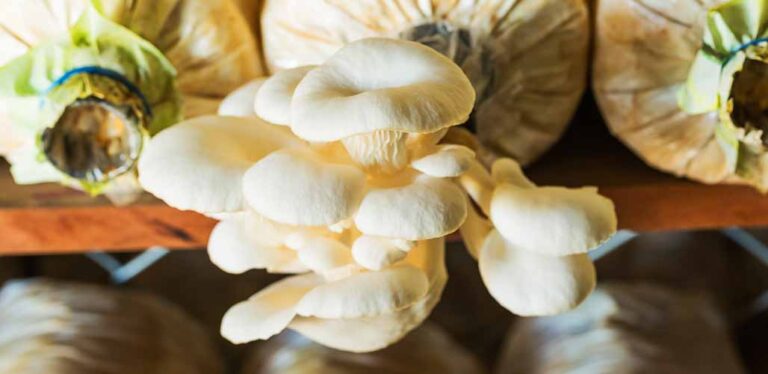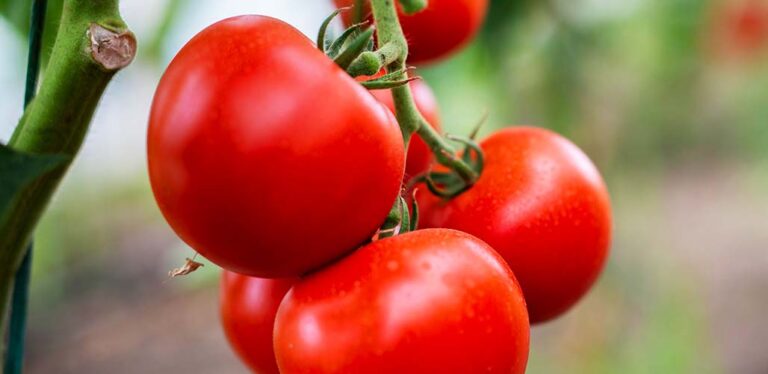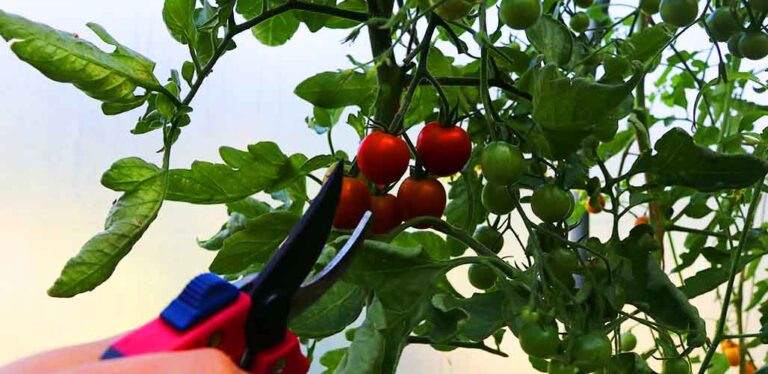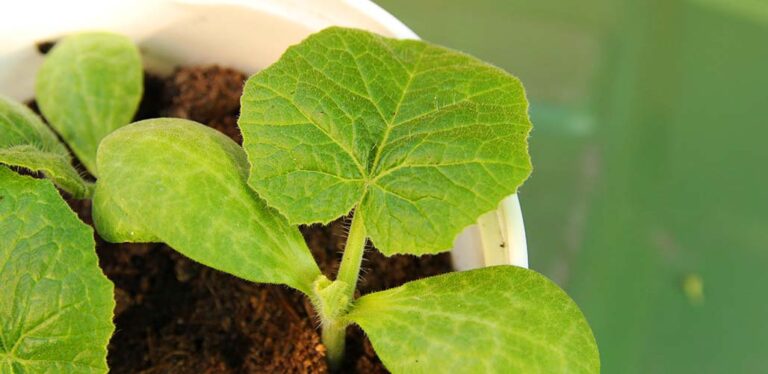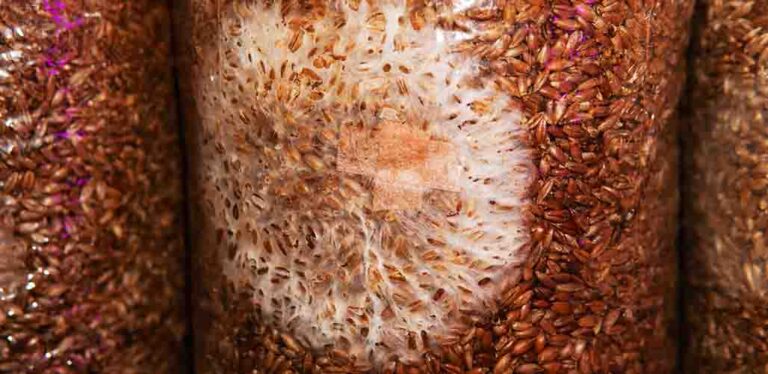Tomato Plant Leaves Turning White
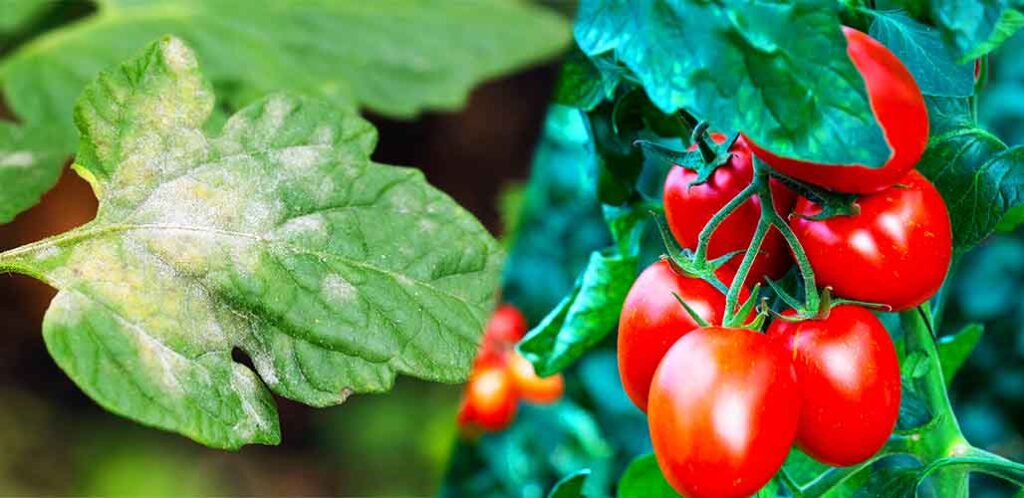
The most common causes of tomato plant leaves turning white are damage caused by overexposure to the sun, especially in young plants. Sun scorching is irreversible, but some other causes of white spots on tomato leaves can be reversed. Even sun scorched plants can recover if you take some simple steps to prevent further damage. In this troubleshooting guide, we take a look at all the reasons tomato vines can lose their verdancy, how to tell them apart, and how to bring their color back. Pale tomato leaves and white spots can be caused by:
We’re going to work through each of the causes of leaves on tomato plants turning white in turn. Including how to identify them, treat them, and prevent them from recurring. Let’s go!
Why are the leaves on my tomato plants turning white?
Getting started with tomato plants is an annual ritual of sowing, pricking out, and planting on. So it’s a demoralising twist of events if the leaves then start to fade. The first and most likely explanation we’re going to look at is sun scorching. Sun scorching is when tomato plants are literally baked by the intensity of the sun’s rays, and affected areas of the plant turn pale, dry, and crispy. It’s the botanical equivalent of getting sunburnt. Here’s how to recognize it:
- The leaves are most likely to be affected where they are thinnest – at the tips and edges.
- Leaves are only affected where they experience direct sunlight. On a small plant or seedling this could be all of them. But on a large or bushy plant, the uppermost and outermost leaves may be more affected than the ones behind or below them.
- Sun scorched areas are very dry and crumbly – if you rub them, they break up like dead leaves in fall.
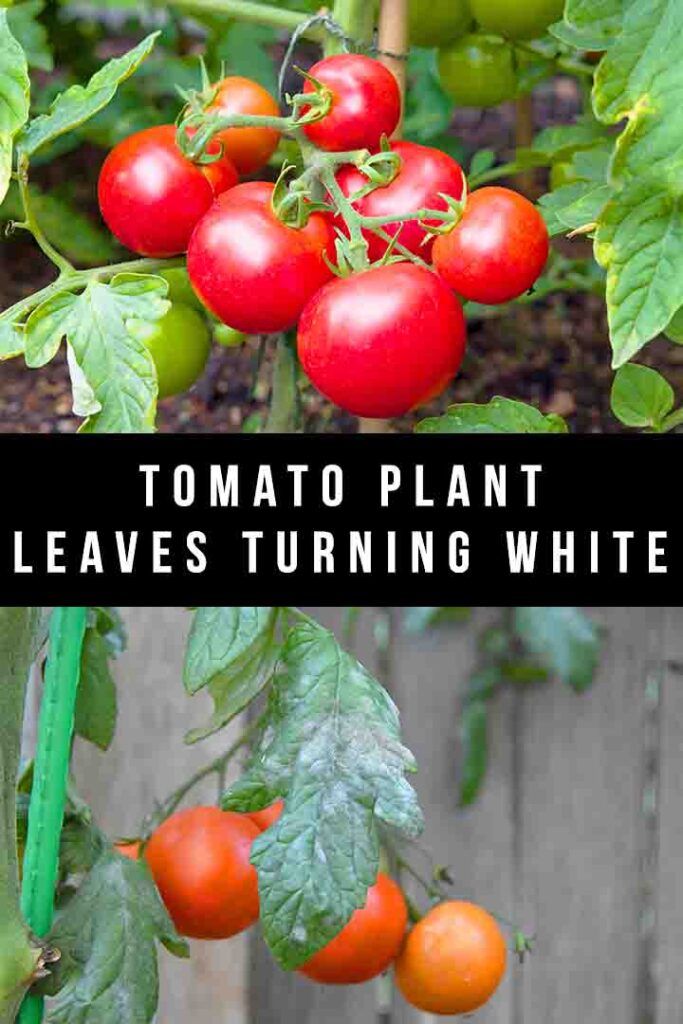
How to fix scorched tomato leaves
Sun scorching is irreversible, so the white damaged areas can’t be undone. Severely affected leaves can be removed, but partially affected leaves should be left so that the plant still has a source of energy while it grows new leaves.
So that your tomato plants can grow and produce fruit without interruption, it’s best to avoid leaf damage from sun scorching altogether if you can. So here’s how to do that:
Preventing sun scorching on tomato seedlings
Sun scorching is more likely to be a problem for young seedlings which were germinated indoors and moved outside without enough opportunity to harden off first. Thorough hardening off is the solution to this. Seedlings raised indoors have tender foliage, because they have not had to withstand the intensity of outdoor conditions. Leaves which have been hardened off properly become more robust, and better adapted to tolerating intense midday sunlight. This change in the structure of their leaves can’t be achieved overnight, so seedlings need to be hardened off gradually. Usually this means putting them outside for a little longer each day, over the course of about a week, and waiting until the very end of the week to leave them out in the middle of the day when the sun is strongest.
Preventing sun scorching on mature tomato plants
Large tomato plants can still get sun scorched, especially if they are growing in a greenhouse in full sun. If this is showing signs of happening to your plants, you can protect them by putting an old sheet over your greenhouse during the hottest part of the day, or by applying shade paint to some of the glass to filter the light.
Nutrient deficiencies responsible for tomato leaves turning white
Some specific nutrient gaps can also cause white spots on tomato plant leaves. Insufficient potassium or magnesium in the soil means tomato leaves can’t take up enough to photosynthesize at the rate they should. Photosynthesis produces chlorophyll which gives leaves their green color. So inhibition of photosynthesis causes yellow patches on the leaves at first (chlorosis), followed by white spots of dead tissue inside the yellow patches, if the problem isn’t resolved.
Inadequate quantities of iron or manganese also cause chlorosis, eventually culminating in leaves so pale they appear white. Whereas potassium and magnesium deficiency affect older leaves first, a shortage of iron or manganese tends to affect new shoots first.
For any nutrient deficiency, the solution is feeding the plant with a multi-purpose fertilizer, or one marketed specifically for tomato plants. Tomato growers can choose to feed their plants weekly according to the instructions on the packaging, daily with a more dilute feed, or continuously using a planter connected capillary matting to a reservoir of water and fertilizer. Loss of pigment should correct itself after a good feed. Any dead white spots will stay dead, but provided they only amount to a small proportion of the plant’s total surface area, that shouldn’t be a problem.
What causes tomato leaves to turn white? Pesky pests
A less common cause of white spots on tomatoes are pests. Frequent pests of tomatoes are:
- Aphids
- Red spider mites
- White fly
- Thrips
These tiny bugs feed off tomato plants by sucking the sap from the leaves. The scars of this experience can appear as small white marks and spots on the surface of the leaf. If it’s not obvious where the culprit is though, try turning the leaf over and looking at the underside!
Pests can be removed from tomatoes plants by spraying affected leaves liberally with water to wash them off. Some growers swear by a small quantity of dish soap or a roughly chopped chili pepper in the water, to give it a soapy or spicy edge. But plain tap water is usually also enough. If you’re really struggling to dislodge a serious infestation, chemical treatments are also available.
To deter pest species from coming back (or invading in the first place) try planting protective companion species such as basil, chives or marigolds near to your tomatoes.
Diseases that cause white splotches on tomato leaves
Finally, we come to the diseases which can be responsible for tomato leaves turning white. And in fact there’s only one suspect in this category, and it’s not a common problem for tomato growers. The disease in question is powdery mildew, which appears as a white coating on leaves and stems. Powdery mildews tend to be species-specific, and whilst cucurbits like cucumbers and melons are very vulnerable to their mildews, tomatoes in the same greenhouse are unlikely to catch it from them. They are most likely to be infected by their own powdery mildew if they are stressed by drought, sun scorching, pests or nutrient deficiencies.
Affected leaves need to be cut away and destroyed so the spores cannot re-infect the plant. Unfortunately once powdery mildew has taken hold it can be very difficult to get rid of, so try to avoid it in the first place by keeping your plants well watered and fed.
Tomato leaves turning white: summary
Towards the end of the growing season most tomato plants are not looking their best, but early in the year, the leaves on your tomato plants should be a deep rich green color. White is not a normal color for tomato leaves, and it’s a sign your plants need some special attention.
The most common reason for tomato leaves turning white is sun scorching, but nutrient deficiencies, pests and diseases can also be responsible. If caught and remedied quickly enough, most of these problems can be remedied.
Do you need to tackle tomato plant leaves turning white? We hope this article has helped you diagnose the problem. Let us know in the comments box down below if you manage to fix it!
Readers also enjoyed
- When To Transplant Tomato Seedlings
- 13 Basil Companion Plants To Plant Right Now
- How To Harvest Cilantro Without Killing The Plant
- Watermelon vs Pumpkin Leaves
- Why Are My Cucumber Leaves Turning Yellow?
- How Much is an Olive Tree Worth?
- Can Tomato Plants Survive Winter?
References
- Buckingham. Allotment Month by Month. Dorling Kindersley. 2009.
- Marshall. The Greenhouse Gardener’s Manual. Timber Press. 2014.
- Tran. Early Diagnosis of Iron Deficiency in Commercial Tomato Crop Using Electrical Signals. Frontiers in Sustainable Food Systems. 2021.

